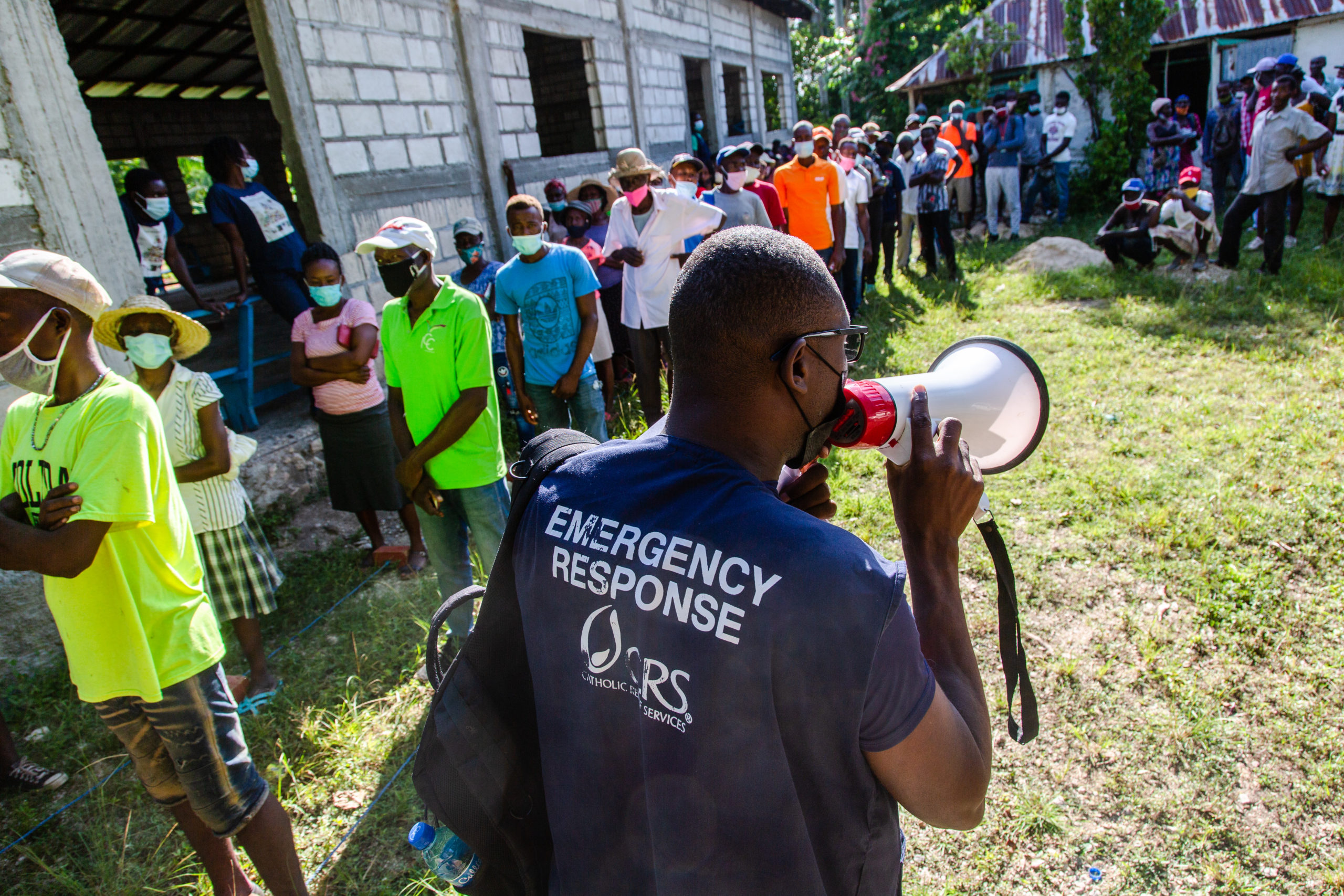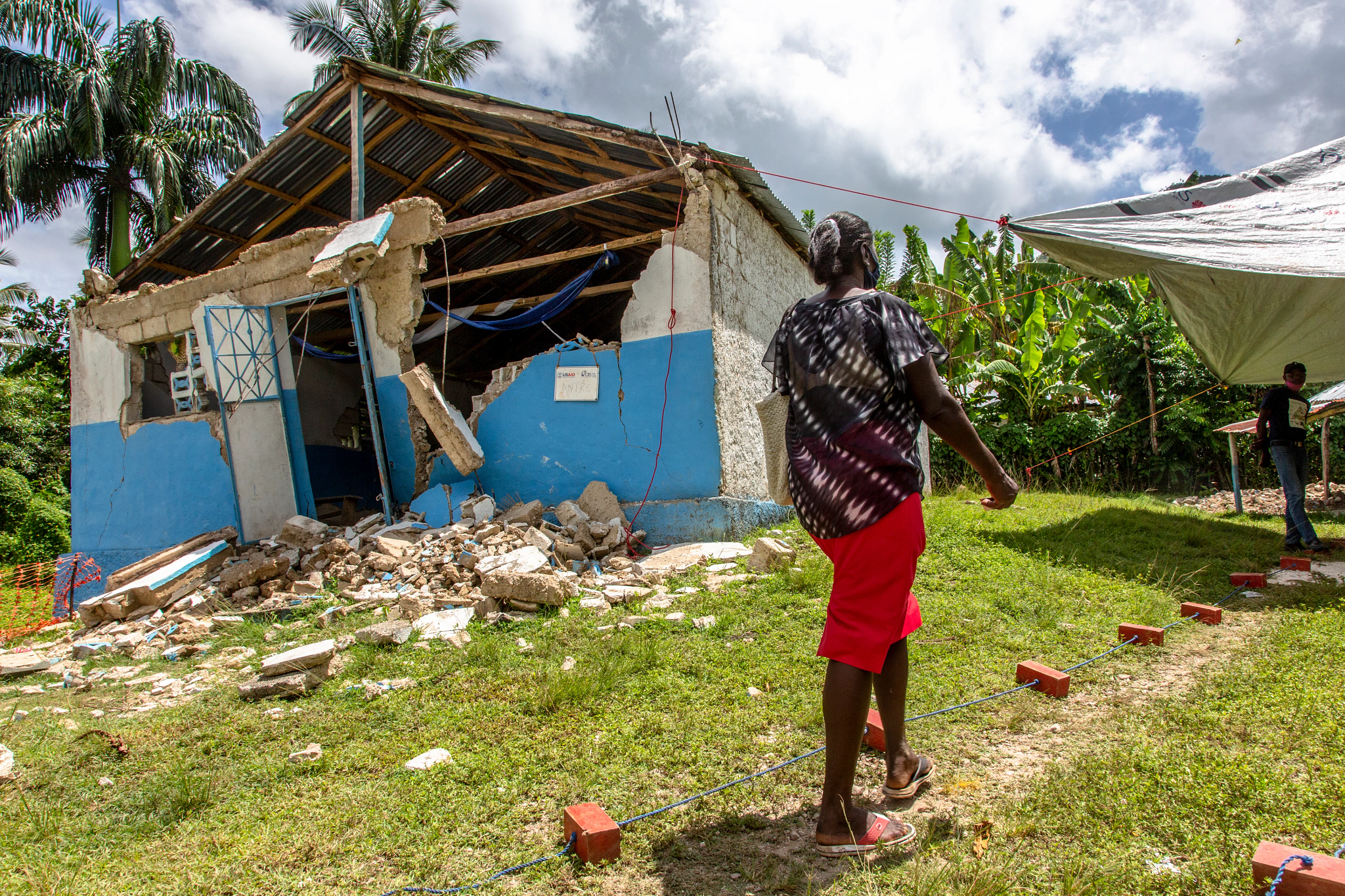
Catholic Relief Services workers are in Haiti to assist after a powerful 7.2 magnitude earthquake in August. (Submitted photo)
On Saturday, Aug. 14, a powerful 7.2 magnitude earthquake shook the southwest area of Haiti with dramatic consequences. A few days following the tremor, the country reported more than 2,000 dead, more than 12,000 injured and tens of thousands of individuals left homeless. The United Nations estimated that nearly 650,000 needed emergency humanitarian assistance in the three more affected departments of Grand’Anse, Nippes, and Sud by the end of August.
Having a permanent base in Haiti is one aspect of Catholic Relief Service’s (CRS) many efforts. CRS maintains two field offices in the earthquake-affected area; the office in les Cayes has functioned continuously since 1954. When the hurricane hit, Beth Carroll, who lives in Port au Prince and serves as Head of Programs in Haiti, was available to travel to the southwest area to ascertain the damage and need for the residents.
However, in the immediate aftermath of the quake, Carroll explained that Haitian families relied on their neighbors, friends and family to provide support.
“In many cases, it was Haitians working with basic tools and their hands that pulled people out from under their collapsed buildings,” Carroll said. “The damage was extensive in some areas. We have visited communities where 90 percent of the homes are now unsafe for habitation. Infrastructure was also damaged, including many critical water supply systems, schools and the bridge leading to the capital city of the Grand’Anse department.”
While families are trying to recover, Carroll admitted that limited support is available because Tropical Storm Grace hampered efforts and ongoing security issues exist on the main highway to the south.
“With all that is going on in the world, there has not been much attention or resources (devoted) to this disaster. The need far outstrips the available aid,” she said. “The area is a food-producing zone, so there is food in the market. But between the earthquake and the restricted supply chain because of the security issues, prices are rising dramatically, and vulnerable families can’t afford to purchase food.”
CRS and staff in the area have leveraged their existing offices in Cayes and Jeremie to provide immediate support, including tarps, hygiene supplies, water and cash to families affected. The CRS office in les Cayes also suffered extensive damage from the earthquake.
“Now the team is pivoting toward recovery activities, helping families repair their homes, repair water systems and build temporary school structures,” Carroll said. “Haitians are facing a very difficult time with a series of natural and civil disasters that continue to unequally affect the poor and vulnerable. But, I am always impressed with how they work together with dignity and respect to keep moving forward.”
In addition to their efforts in Haiti, Catholic Relief Services serves the poor across the globe and is one of the largest international aid organizations in the world. They are also one of the most efficient and practical: Ninety-seven percent of their expenditures go directly to programs that benefit individuals overseas. As part of the universal mission of the Church, they work with local, national and international Catholic institutions and structures and other organizations to assist people based on need, without regard to race, religion or nationality. They alleviate suffering and help more than 100 million people in need who live in some of the most impoverished places in over 100 countries.
To help CRS’ efforts in Haiti, donate to CRS’ Haiti response at https://support.crs.org/donate/haiti-earthquake.


